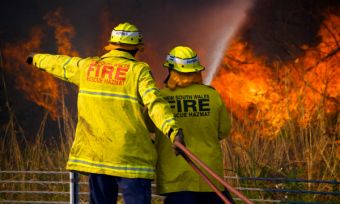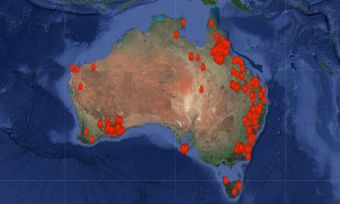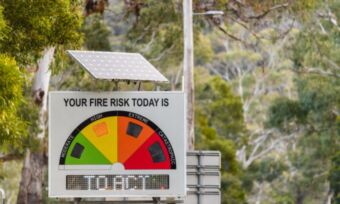More than 2,800 homes have been damaged or destroyed so far by the bushfires that continue to burn across Australia.
The Insurance Council of Australia (ICA) estimates that insurance losses stand at $995 million since September. Over 11,000 claims have already been lodged from regions in NSW, Victoria, Queensland and South Australia.
If your home has been affected by the bushfires, here are the steps you can take to make an insurance claim if you have a policy in place.
Australian Bushfire information and updates: Resources here.
Related stories:
Does your home and contents insurance include fire protection?
How to make a bushfire insurance claim
12 ways to reduce bushfire risk to older homes
Bushfires to coronavirus – What is a P2 mask?
1. Get in contact with your insurer
As soon as it’s safe to do so, contact your insurer or insurance broker to get your claims process started. You can do this even if you haven’t returned to your property and don’t yet know the extent of the damage.
Your insurer may be able to provide you with emergency accommodation and financial support as part of your claim.
The contact numbers for some of the major insurers are:
- NRMA: 132 132
- Suncorp: 132 524
- QBE: 133 723
- Allianz: 131 013
- Zurich: 132 687
Don’t worry if you don’t have your policy paperwork with you. Your insurer will have records of your policy details. If you can’t remember who your insurer is, you can contact the ICA on 1800 734 621. This is a 24-hour hotline to help anyone affected by the fires with their insurance.
It’s important to go directly to your insurer, insurance broker or financial adviser. ASIC has warned people to watch out for “fictitious or unscrupulous tradespeople, repairers or firms” offering to assist them with insurance claims. Be wary of anyone who asks for payment upfront or asks you to sign a contract immediately, ASIC Commissioner Sean Hughes said.
2. Take photos and make a list of the damage
If it is safe for you to do so, take lots of photos and videos of the damage to your home and belongings. This will help the insurance assessor when they are looking at your claim.
You should also make a list of all the items that have been damaged or destroyed by the fire. Think about each room in your home and what items you had there – things like furniture, electronics and clothing – and include as much information as you can about these items (including pre- and post-fire photos if you have them). Don’t forget to also factor in any belongings you have in a shed or garage.
3. Try to prevent further damage if you can
Insurance policies will typically require you to take reasonable steps to prevent further damage to your property. For example, this could include putting a tarp over a damaged roof or moving your belongings to an undamaged part of the property. However, you should only take preventative steps if it’s safe to do so.
4. Speak to your insurer before making any repairs
It’s best to contact your insurer before you make any repairs or do any clean-up. Most insurers will want to assess the damage to your property before any repairs are carried out and may want to approve the repairer you use.
If you need to do any emergency repairs or clean-up, take photos before you start and after you finish the work, and keep any receipts. Don’t throw away any items unless they are hazardous.
What happens next?
Insurers are required to respond within 10 business days of receiving your claim. If they need more information from you, they must contact you within this timeframe and let you know what is required and an initial estimate of how long they’ll take to make a decision.
If you are in urgent financial need – for example if you need alternative accommodation or basic living requirements – your insurer may fast-track your claim or give you an advance payment within five business days.
If you’re unhappy with your insurer’s response or the eventual outcome of your claim, you can lodge a complaint with the Australian Financial Complaints Authority (AFCA).
Where to get help
The ICA has a 24-hour disaster hotline (1800 734 621), where you can access general information about claims and recovery.
If you need financial help, you may be able to receive financial assistance from the government and organisations like the Australian Red Cross.
MoneySmart has also listed a number of resources for people who need financial, legal or emotional support following a disaster.
Related: Bushfires to coronavirus: What is a P2 mask?
Main image source: Filip Fuxa (Shutterstock)







Share this article